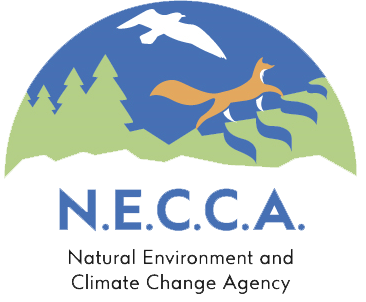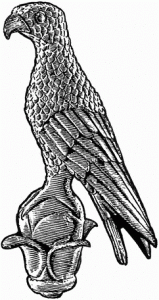WIND
Πληροφορίες έργου
*Το έργο χρηματοδοτήθηκε με σύναψη σύμβασης με το Ε.Κ.Π.Α.Α. (Εθνικό Κέντρο Περιβάλλοντος & Αειφόρου Ανάπτυξης) – νυν ΟΦΥΠΕΚΑ
Δρ. Βασιλική Κατή. Επιστημονικά Υπεύθυνη
Δρ. Χριστίνα Κασσάρα, βιολόγος
Λυδία Ταμπουρατζή, αγρονόμος & τοπογράφος μηχανικός Ε.Μ.Π
Δημήτρης Γκότσης, μηχανικός σχεδίασης προϊόντων & συστημάτων
Δρ. Όλγα Τζωρτζακάκη, βιολόγος
Δρ. Δημήτρης Βασιλάκης, δασολόγος
Δρ. Σύλβια Ζακκάκ, βιολόγος
Μαρία Πετρίδου, γεωπόνος, Υπ. Διδ. BCL/Π.I.
Λαυρέντης Σιδηρόπουλος, περιβαλλοντολόγος, Υπ. Διδ. BCL/Π.Ι.
Μαρία Ψαραλέξη, βιολόγος, Υπ. Διδάκτορας ΑΠΘ
Νίκος Μπούκας, Βιολόγος
Τόνια Γαλάνη, Βιολόγος
Εξωτερικοί συνεργάτες
Δρ. Ζωή Βροντίση, μηχανικός
Δρ. Άρης Μουστάκας, μηχανικός
Σκοπός
Ερευνητικά ερωτήματα
- Πώς θα πρέπει να χωροθετηθούν οι ΑΣΠΗΕ στη χώρα μας ώστε να έχουν τις ελάχιστες δυνατές επιπτώσεις στη βιοποικιλότητα και στο τοπίο;
- Ποιοι παράγοντες επηρεάζουν την αύξηση της τεχνητής γης από την εγκατάσταση ΑΣΠΗΕ στο Ελληνικό τοπίο;
- Ποιες βελτιώσεις προτείνονται για τη σύγκλιση των δυο πολιτικών, της κλιματικής αλλαγής και της διατήρησης της βιοποικιλότητας, στο πλαίσιο των Στόχων Βιώσιμης Ανάπτυξης;
Δράσεις
1.
Αναλύσεις χωρικών δεδομένων
2.
Χωροθέτηση ΑΣΠΗΕ & ΣΒΑ
3.
Τεχνητές εκτάσεις και ΑΣΠΗΕ
4.
RES & SDGs
5.
Διάχυση αποτελεσμάτων
Αποτελέσματα
Βάσεις δεδομένων

Kati, V., Kassara, Ch. 2020. Sustainable spatial planning for windfarms in Greece. Mendeley Data, v1
Δημοσιεύσεις
Kati, V*., Kassara, Ch., Vrontisi, Z., Moustakas, A. 2021. The biodiversity-wind energy-land use nexus in a global biodiversity hotspot. Science οf the Total Environment, 768, 144471.
Kati, V*., Kassara, C*., Panagos, P., Tampouratzi, L., Gotsis, D., Tzortzakaki, O., Petridou, M., Psaralexi, M., Sidiropoulos, L., Vasilakis, D., Zakkak, S., Galani, A., Mpoukas, N., 2023. The overlooked threat of land take from wind energy infrastructures: Quantification, drivers and policy gaps. Journal of Environmental Management 348, 119340.
Διαλέξεις

Kati V. 2021. The nexus roads-windfarms-biodiversity under the light of sustainable spatial planning. University of Thessaly – Department of Civil Engineer. 22/12/2021. (in Greek)

Κατή Β, 2021. To τρίπτυχο βιοποικιλότητα-δρόμοι-αιολικά στο πλαίσιο των Στόχων Βιώσιμης Ανάπτυξης: η Ελληνική περίπτωση. Ανοιχτό Πανεπιστήμιο Κύπρου. 10/2/2021. (Ελληνικά)

Kati V. 2021.. Need of habitat fragmentation minimization policy in the EU for resolving road sprawl -wind farm -biodiversity loss nexus: the case of Greece. Policy Committee of the European Section of the Society for Conservation Biology. 26/1/2021. (in English)
Συνέδρια
Αφίσα

WIND poster: Sustainable scenario for windfarm spatial planning in Greece for minimal impact of wind energy projects on biodiversity
MME
Σε αυτό το χωρίο αναρτώνται άρθρα του διεθνούς και εθνικού/τοπικού τύπου που αναφέρονται στα επιστημονικά ευρήματα της έρευνάς μας. Τα άρθρα είναι ενδεικτικά και παρατίθενται χωρίς να αντανακλούν απαραίτητα τη γνώμη του BCL. Η κάλυψη της έρευνάς μας από τα ΜΜΕ είναι ένας δείκτης απήχησης της έρευνάς μας στην κοινωνία.
ΔΙΕΘΝΗΣ ΤΥΠΟΣ
Hans von der Brelie. EURONEWS CHANNEL: Why are plans to build more wind farms in Greece so controversial? 12/4/2024
Eurydice Bersi. Reporters United. Too much of a good thing? Wind power and the battle for Greece’s wild heart. 7/10/2021
Eurydice Bersi. NZZ. Ein Kampf um Windmühlen in Griechenland – der Naturschutz ist im Gegenwind. 21/3/2021.
TNH Staff. The National Herald. Greece Goaded to Keep Wind Farms Away from Environmental Areas. 24/3/2020
Giorgos Lialios. E-kathimerini. Experts urge Greek gov’t to rewind turbine plans. 23/03/2020
ΕΘΝΙΚΟΣ ΤΥΠΟΣ
Κώστας Αγορής: Πρωϊνός Λόγος. «Αστερίσκοι» για τη χωροθέτηση αιολικών πάρκων στη χώρα μας! 13/1/2024
Γιώργος Λιάλιος. Καθημερινή. Πόση γη «χάνεται» στα αιολικά. 5/1/2024
Μάριος Διονέλλης. Εφημερίδα των Συντακτών. Αντιπεριβαλλοντικά τα αιολικά με τη βούλα της επιστήμης. 31/1/2021
Γιώργος Λιάλιος. Καθημερινή. «Ντιμπέιτ» για αιολικά και Natura. 23/3/2020
Βαρβάρα Αγγέλη. Typos i. Επτά φοιτητές επιχειρηματολογούν για τα αιολικά πάρκα. 17/5/2020
Νέα
Νέα για το έργο WIND, συμπεριλαμβάνοντας ειδοποιήσεις για νέο παραγόμενο ερευνητικό υλικό, άρθρα στα ΜΜΕ, την πολιτική απήχηση και τις αντιδράσεις της κοινωνίας αναρτώνται στο BCL facebook page. Αυτό το χωρίο περιλαμβάνει ενδεικτικές αναρτήσεις από τον ιστοχώρο «ΕΠΙΣΤΗΜΗ ΓΙΑ ΤΗΝ ΚΟΙΝΩΝΙΑ»


